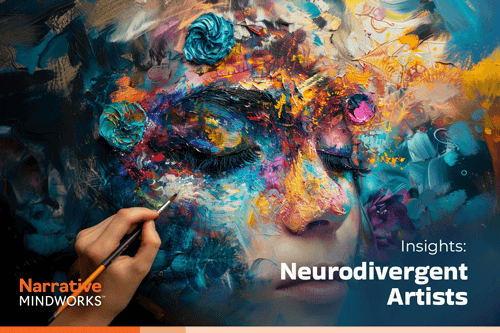The Center of Creative Works in Wynnewood, PA is doing groundbreaking work by showcasing the work of neurodivergent artists.
 Neurodivergent art refers to artistic work created by individuals who identify as neurodivergent. Neurodivergence encompasses a variety of conditions and cognitive differences from what is typically considered the neurological norm, including autism, ADHD (Attention Deficit Hyperactivity Disorder), dyslexia, Tourette's Syndrome, and others. The term "neurodivergent" is used to highlight that these differences are natural variations of the human brain rather than deficiencies. Many if these neuro gifts result in extraordinary abilities to create great art, and story. Some of the worlds most gifted storytellers have innate ability to conduct and encourage great narrative adentures both within themselves and in witness to others. Authors inclue Octavua Butler, Temple Grandin,, Henrietta Smith F.,Derek Paravicini, Gary Numan, and Will Wheeler.
Neurodivergent art refers to artistic work created by individuals who identify as neurodivergent. Neurodivergence encompasses a variety of conditions and cognitive differences from what is typically considered the neurological norm, including autism, ADHD (Attention Deficit Hyperactivity Disorder), dyslexia, Tourette's Syndrome, and others. The term "neurodivergent" is used to highlight that these differences are natural variations of the human brain rather than deficiencies. Many if these neuro gifts result in extraordinary abilities to create great art, and story. Some of the worlds most gifted storytellers have innate ability to conduct and encourage great narrative adentures both within themselves and in witness to others. Authors inclue Octavua Butler, Temple Grandin,, Henrietta Smith F.,Derek Paravicini, Gary Numan, and Will Wheeler.
Art by neurodivergent individuals often reflects unique perspectives, experiences, and ways of processing the world. It can vary widely in form, style, and subject matter, just as with art by neurotypical individuals. However, some common themes or characteristics might include:
- Unconventional use of color, texture, and space: Artists may employ color and texture in distinctive ways that express how they perceive and interact with their surroundings
- Detailed or pattern-oriented artwork: Some neurodivergent artists may focus on intricate details or repetitive patterns, reflecting their deep focus or fascination with specific subjects or sensory experiences.
- Expressive of sensory experiences: Art may be used to communicate how the artist experiences sensory input, which can be different for someone who is neurodivergent. For example, it might illustrate heightened sensory perception or sensory overload.
- Narratives on social interaction and isolation: Works may explore themes of social connectivity, misunderstanding, isolation, or the desire for acceptance, reflecting personal experiences of navigating a world designed for neurotypical individuals.
- Visualizing thought processes and neurodivergent experiences: Art can serve as a means to visualize and communicate the unique cognitive processes and experiences of being neurodivergent, offering insights into different ways of thinking and being.
Neurodivergent art is not a separate genre but rather an acknowledgment of the diverse perspectives neurodivergent artists bring to the art world. It emphasizes the importance of inclusivity and the value of understanding and appreciating the wide range of human experiences and expressions.

